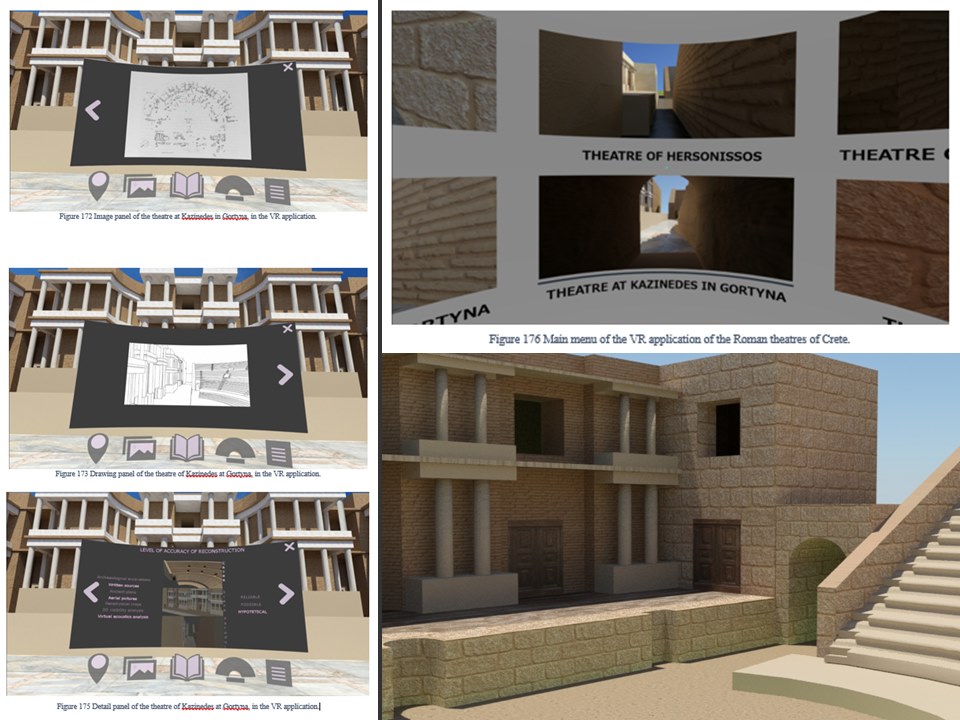CULTURAL HERITAGE
Roman Theaters in Crete

3D visibility analysis
3D visibility analysis, including construction of lines of sight and creation of frequency of visibility maps, is applied to 3D reconstructions of the Roman theatres of Crete, to validate or to confute the interpretation of their architectural structure, and then, in order to achieve more reliable hypothesis about their original aspect. In particular, the visibility of the stage from the spectators’ positions in the cavea will be verified. In this case, the advantage to work in a fully 3D environment is the immediate visual perception of the space, and therefore the possibility to understand which obstacles impede the visibility of a determined target and from which position. The theatres have been virtually recreated by means of AutoCad and 3D Studio Max software packages and the 3D visibility analysis has been performed through ArcScene and the visibility toolkit. The reconstructions are based on ancient and recent plans, travellers’ descriptions, reports of archaeological excavations, scholars’ interpretations and remains in situ.
Virtual acoustics analysis
Virtual acoustics analysis uses 3D models along with ray-tracing plus image source methods to measure the impulse response length of a sound in a room and to know the values of several acoustic parameters. In order to be able to evaluate the acoustic quality of the Roman theatres of Crete, five parameters has been taken into account: reverberation time, early decay time, clarity, definition and speech transmission index. The auralisation (the convolution of an anechoic file with the impulse response) is a subjective parameter that was considered as well during this research. Previous studies demonstrated that each architectural element within a theatre influences the acoustics. The analysis of the resulting values of the above-mentioned acoustic parameters allow to verify the correct hypothetical reconstruction of the Roman theatres of Crete. The 3D models have been realised by means of AutoCad and the virtual acoustics analysis has been performed through the software Odeon Room Acoustics.

